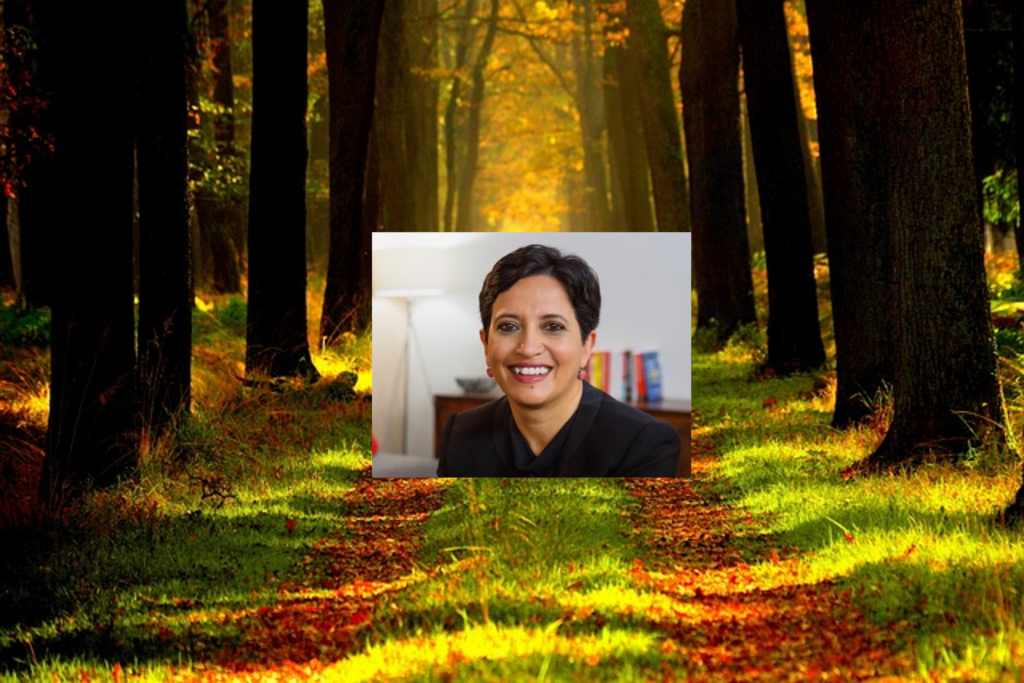Entrepreneur Journeys
The Startup Velocity Question: What Hinders Acceleration in VC Funded Companies?

I have been running 1Mby1M since 2010. I find myself saying to entrepreneurs ad nauseam that VCs want to invest in startups that can go from zero to $100 million in revenue in 5 to 7 years.
Startups that do not have what it takes to achieve velocity should not be venture funded.
Experienced VCs, over time, have developed heuristics to gauge what constitutes a high growth venture investment thesis.
>>>1Mby1M Udemy Courses with Sramana Mitra: Bootstrapping

Over the course of two years, we have released over 70 courses on Udemy with the aim to democratize entrepreneurship education at scale globally. This series of posts aims to help you find the one you need easily and provide you with discount coupons.
>>>Building a Fat SaaS Venture: Rob Hull, Founder and President of Adaptive Insights (Part 1)
If you haven’t already, please study our Bootstrapping Course and Investor Introductions page.
We continue our coverage of fat startups, how they get funded, built, and scaled in this series with Adaptive Insights. Lean startups get a lot of attention now, but I have been covering fat startups as well with stories like Adaptive Insights.
Sramana: Rob, let’s start by reviewing your background. Where do you come from? What are the roots to your entrepreneurial journey?
Rob Hull: I was born in Austin, Texas. I spent most of my early years in southern California before heading north to attend Stanford. I was an economics major but did some dabbling in computer science classes. I graduated form Stanford in 1988. I decided that since I had spent most of my life in California, it was time to live somewhere different. So, I moved to the east coast. >>>
Featured Videos
Can 1M/1M Help Me Raise Money?
How Does 1M/1M Democratize Entrepreneurship Education?
How Does 1M/1M Democratize Management Consulting?
When Is The Right Time To Join 1M/1M?
Can 1M/1M Help Me With Business Development?
Can 1M/1M Help Me With Market Sizing?
Can 1M/1M Help Me Validate My Product?
Will I Have Private 1-on-1 Sessions In 1M/1M?
How Does 1M/1M Help Entrepreneurs Connect With Silicon Valley?
Mentoring or Consulting?
Why Does 1M/1M Charge $1000 a Year?
Why Does 1M/1M Partner With Local Organizations?
Why Don\’t Mentoring Networks Work?
Why Is It Important To Study With 1M/1M Now?
Dan Stewart Story
Vikrant Mathur Story
Bootstrapping a Big Data Company Using Services: DataSong CEO John Wallace (Part 1)
If you haven’t already, please study our Bootstrapping Course and Investor Introductions page.
We maintain that one of the best ways to identify complex problems worth solving inside enterprises is by offering services to them, thereby gaining exposure to the domain. Datasong is yet another case in point. Related reading: Bootstrapping Using Services.
Sramana Mitra: Let’s start at the beginning. Where are you from? What kind of a backstory leads up to the entrepreneurial story?
John Wallace: I grew up in the South from a pretty modest background.
Student Entrepreneur to $10M+ in Revenue Without Dropping Out: Course Hero CEO Andrew Grauer (Part 1)
If you haven’t already, please study our Bootstrapping Course and Investor Introductions page.
We love student entrepreneurs who have managed to not only build successful businesses but have done so without dropping out of school. We also love entrepreneurs who have the discipline to get to a strong and sustainable monetization model early on in their evolution. Andrew Grauer scores on all fronts, and there is much to learn from this entrepreneur’s journey.
Sramana Mitra: Andrew, let’s start with your personal beginning. Tell us where you were born, raised, and in what circumstances. What’s the back story of Course Hero?
Andrew Grauer: I’m from the Bay Area of California. I grew up there my whole life. I went to college in Ithaca, New York at Cornell University. After graduating at Cornell, I came back to the Bay Area and continued working on Course Hero here.
Ultra-light Startup with $6 Million Revenue: Car Part Kings CEO Michael Dash (Part 1)
If you haven’t already, please study our Bootstrapping Course and Investor Introductions page.
We’re seeing the trend everywhere – companies building significant revenue and market reach with very few employees. Car Part Kings is approaching $10 million in revenue with 14 employees. Of course, WhatsApp’s $19 billion valuation with 32 employees is an extreme example of this trend.
Sramana: Michael, let’s start at the beginning of your story. Where are you from? What kind of circumstances were you raised in?
Michael Dash: I was born in New York. I was raised in New York for half of my life before moving to the suburbs in Long Island. I went to high school in Long Island and then went to College at Tulane in New Orleans. I finished college in 2004 and then I got into real estate. I did real estate for 5 years and worked in financing, construction, project management, and all the phases of real estate you can imagine. >>>
Identifying Customer Pain Through Consulting Services: Tealium Co-Founder & President, Ali Behnam (Part 1)
If you haven’t already, please study our Bootstrapping Course and Investor Introductions page.
Three years of web analytics consulting led Ali and his co-founder to identify a core customer need around which he is now building a high-growth, venture-funded company.
Sramana Mitra: Ali, let’s start with your own personal journey. Where were you born and raised? What kind of story leads up to Tealium?
Ali Behnam: I was born in Iran. Our family migrated outside Iran after the revolution. We actually ended up finding ourselves in France, which is where I got my high school degree. Later on, I came to San Diego for my college education at UC San Diego. I just fell in love with San Diego. Following my graduation, I decided that San Diego is where I want to spend the rest of my life.
Thought Leaders in Online Education: Todd Hitchcock, COO of Pearson Embanet (Part 1)
If you haven’t already, please study our Bootstrapping Course and Investor Introductions page.
The Higher Education industry is going through massive adoption of online education. This conversation highlights the trends, as well as areas where Pearson is looking for partners.
Sramana Mitra: Todd, let’s start with introducing our audience to yourself as well as to the Pearson Embanet unit so that we have some context set for the conversation.
Todd Hitchcock: Thank you very much for taking the time to meet with us today. I’m Todd Hitchcock and I currently manage our managed-program business at Pearson Embanet. I’ve been in education since 1990. I’ve been an educator myself and have run online programs. I came to Pearson just over six years ago to essentially build out our online learning strategy. Prior to managing our Pearson Embanet business, I was responsible for our US Higher Education online learning strategy and our content and courseware. >>>
Building a Pre-IPO Company Over 10 Years: Centrify CEO Tom Kemp (Part 1)
If you haven’t already, please study our Bootstrapping Course and Investor Introductions page.
Tom Kemp founded Centrify in 2004 with a PowerPoint financing of $7 million. The company managed to survive the terrible recession of the late 2000 decade and is on its way to an IPO. Here, Tom discusses the highlights of his journey.
Sramana: Tom, to begin, why don’t you tell us a bit about yourself. Where are you from? What is the genesis of your entrepreneurial journey?
Tom Kemp: I was born in Chicago. I grew up in Michigan and I went to the University of Michigan. Right after college, I decided to head to Silicon Valley. I started my career at Oracle and from there, it has been a series of startups. My first startup went okay and I learned a lot. After that, I did another startup called NetIQ, which went great and we went public. I was with that company for eight years and we got to $250 million in sales with a billion dollar market cap. >>>
Finding a Viable Monetization Model: wefi CEO Zur Feldman (Part 1)
If you haven’t already, please study our Bootstrapping Course and Investor Introductions page.
8 million users and no revenue. What do you do? Find out from Zur Feldman.
Sramana Mitra: Zur, let’s start with your personal story. Where are you from? Where were you born and raised? What kind of circumstances?
Zur Feldman: I’m originally from Israel. I spent all my youth in Israel. I ended up spending 26 years in different places in the US. Through different paths, which I can later talk about, I ended up studying in New York. My first degree is in Photojournalism and Television. I then went to Los Angeles and joined UCLA. I studied Business Administration and spent a big part of my time there – nine years. I made a switch from the diplomatic core into high-tech industry in 1986. >>>
Scaling a Pre-IPO Enterprise Software Company: Anaplan CEO Fred Laluyaux (Part 1)
If you haven’t already, please study our Bootstrapping Course and Investor Introductions page.
This story traces the mechanics of scaling an enterprise software company that is close to $100 million in bookings in 2014, and is contemplating an IPO soon.
Sramana: Fred, let’s start out this story by learning a bit more about you. What is your backstory?
Fred Laluyaux: I was born and raised in Paris, France. I started my first business as a DJ when I was in college. I went to a business school in France between 1988 and 1992. I tried to launch a company around the music business and I was tempted to run that as a business. I enjoyed technology although my degree was in business. I did, however, do a training program in the US with a technology company as part of my college work. That is how I gained my passion for technology. I stayed in touch with the CEO of that company and he acquired the exclusive rights for their technology, which was developed by some folks from MIT and Harvard. >>>
Buliding a Venture Scale Analytics Platform Company: Birst CEO, Brad Peters (Part 1)
If you haven’t already, please study our Bootstrapping Course and Investor Introductions page.
Birst’s beginnings had many of the same principles that we espouse in 1M/1M, engaging customers in paying relationships early on being the foremost. Today, the company has raised four rounds of venture capital, and is growing fast as a regular Silicon Valley-style pre-IPO company.
Sramana Mitra: Brad, let’s do your back story first. Where are you from? Where were you born and raised? >>>
